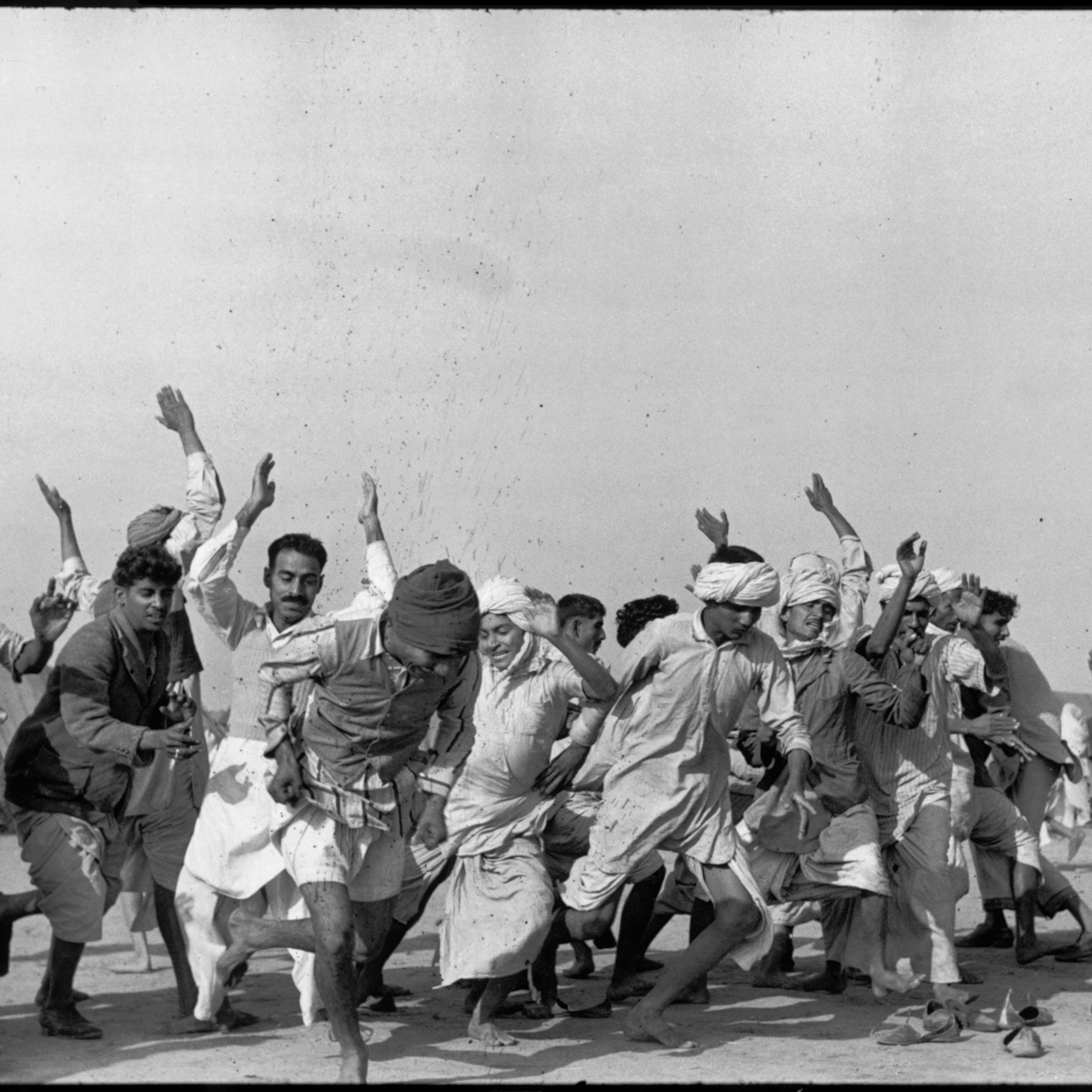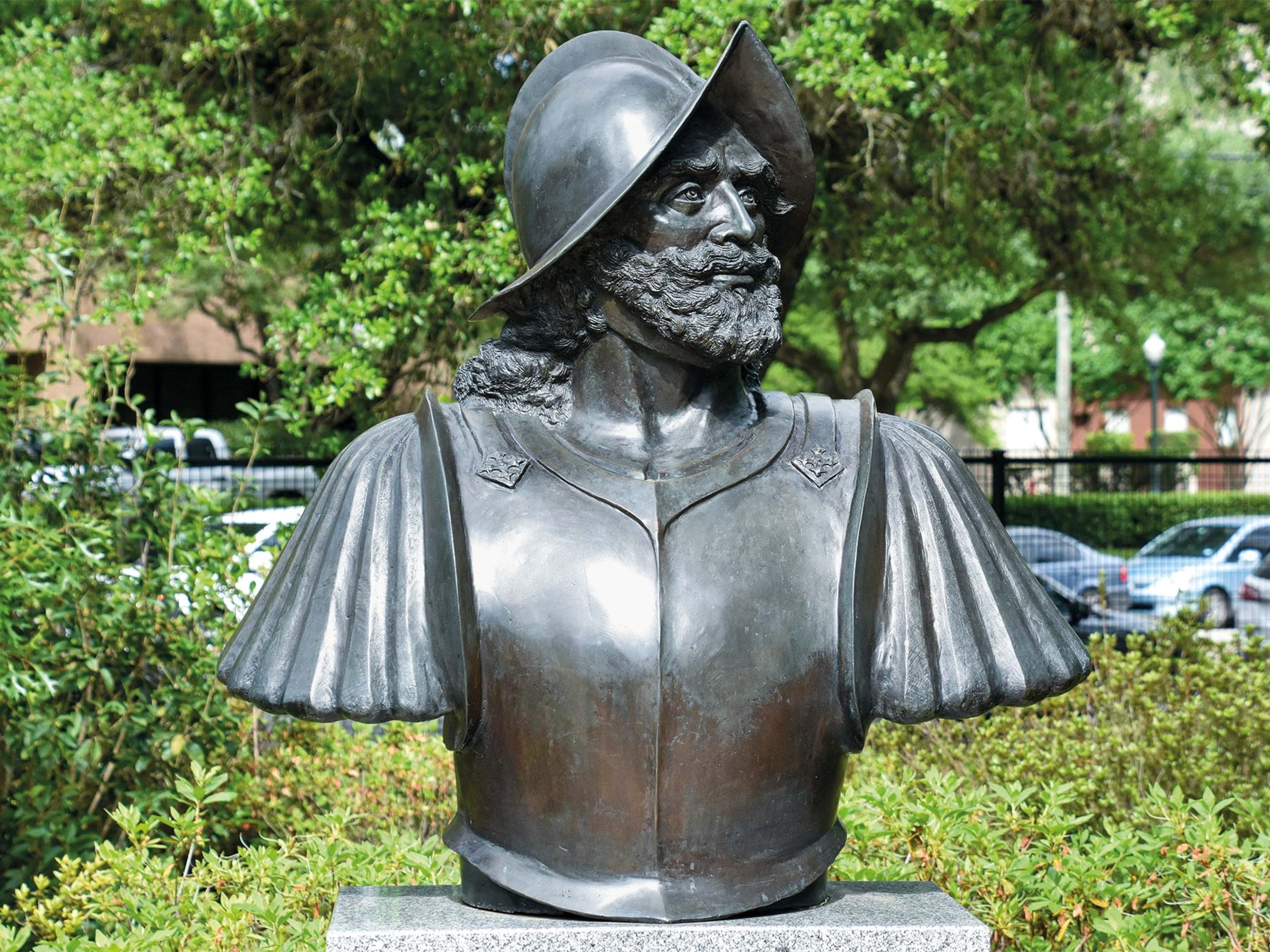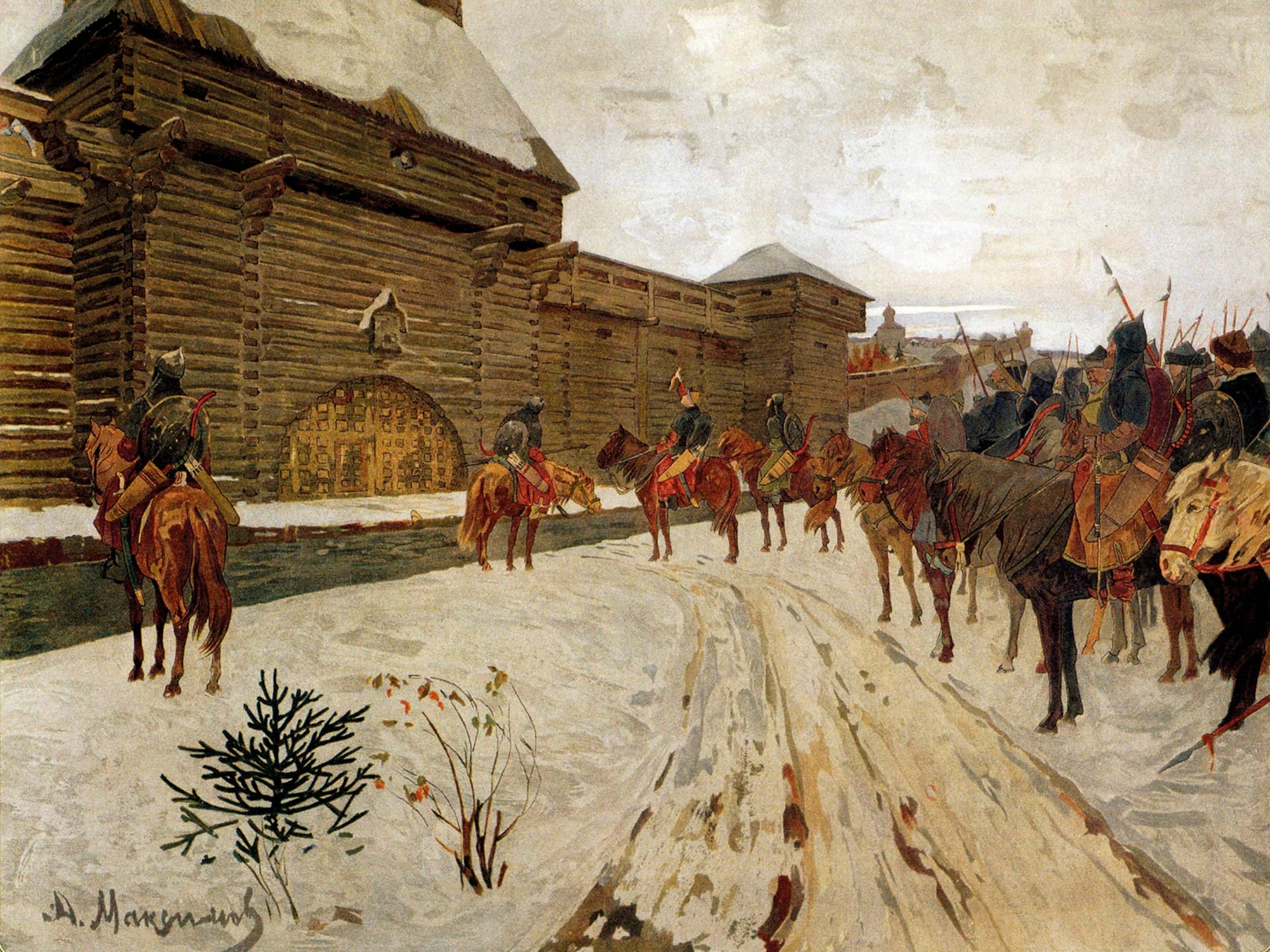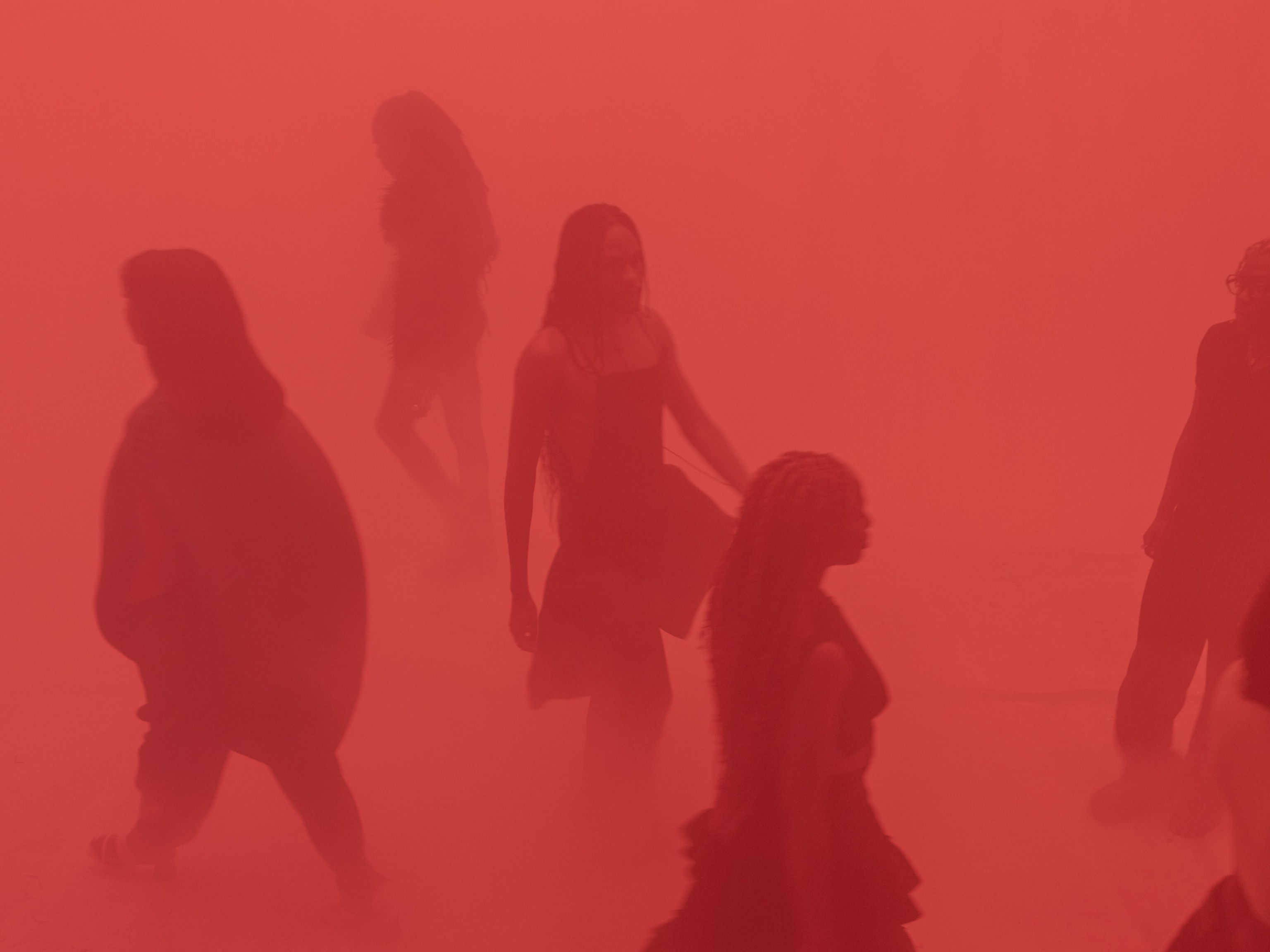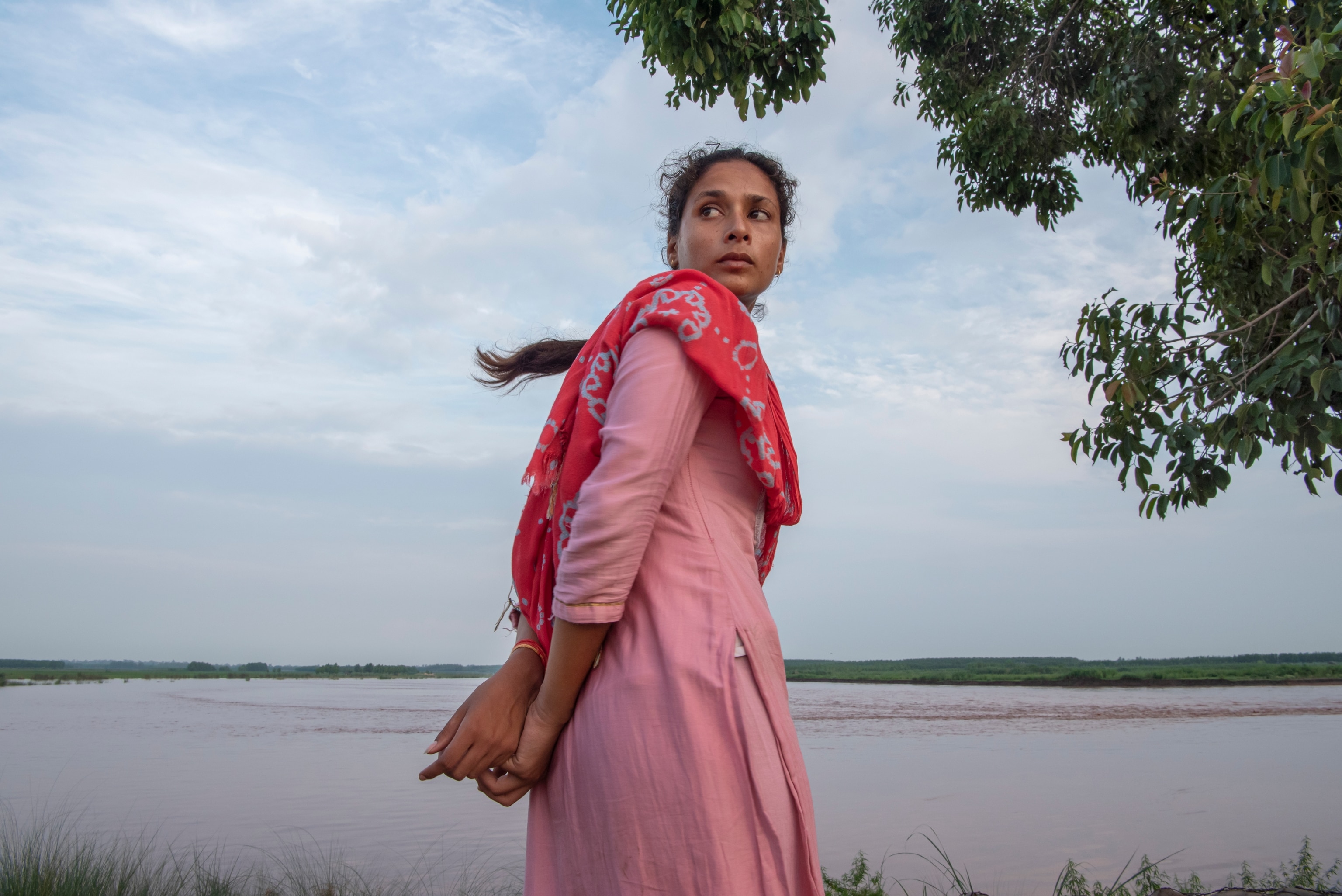
For villages divided between India and Pakistan, a map drawn long ago still causes daily struggles
The seven hamlets contend with a raging river, an international border fence and little access to basic necessities. "We are the forgotten people," one resident says."
Makaura Pattan, India — Along India’s international border with Pakistan, seven hamlets on the Ravi River rely on scattered lifelines for survival: a floating bridge that has to be dismantled for four months every year during monsoon season, a lone boat in the monsoons, a couple of empathetic boatmen.
Around 3,500 people live in the cluster of seven villages known as Makaura Pattan, which include Tur, Lasian, Rajpur Cheba, Bharial, Kajli, Mammi Chak Ranga, and Kukar. On one side, the land is fenced in by the Ravi, a fierce river that separates it from the Indian mainland; on the other, miles of heavily guarded barbed wire and steel mesh fence partition it from Pakistan.
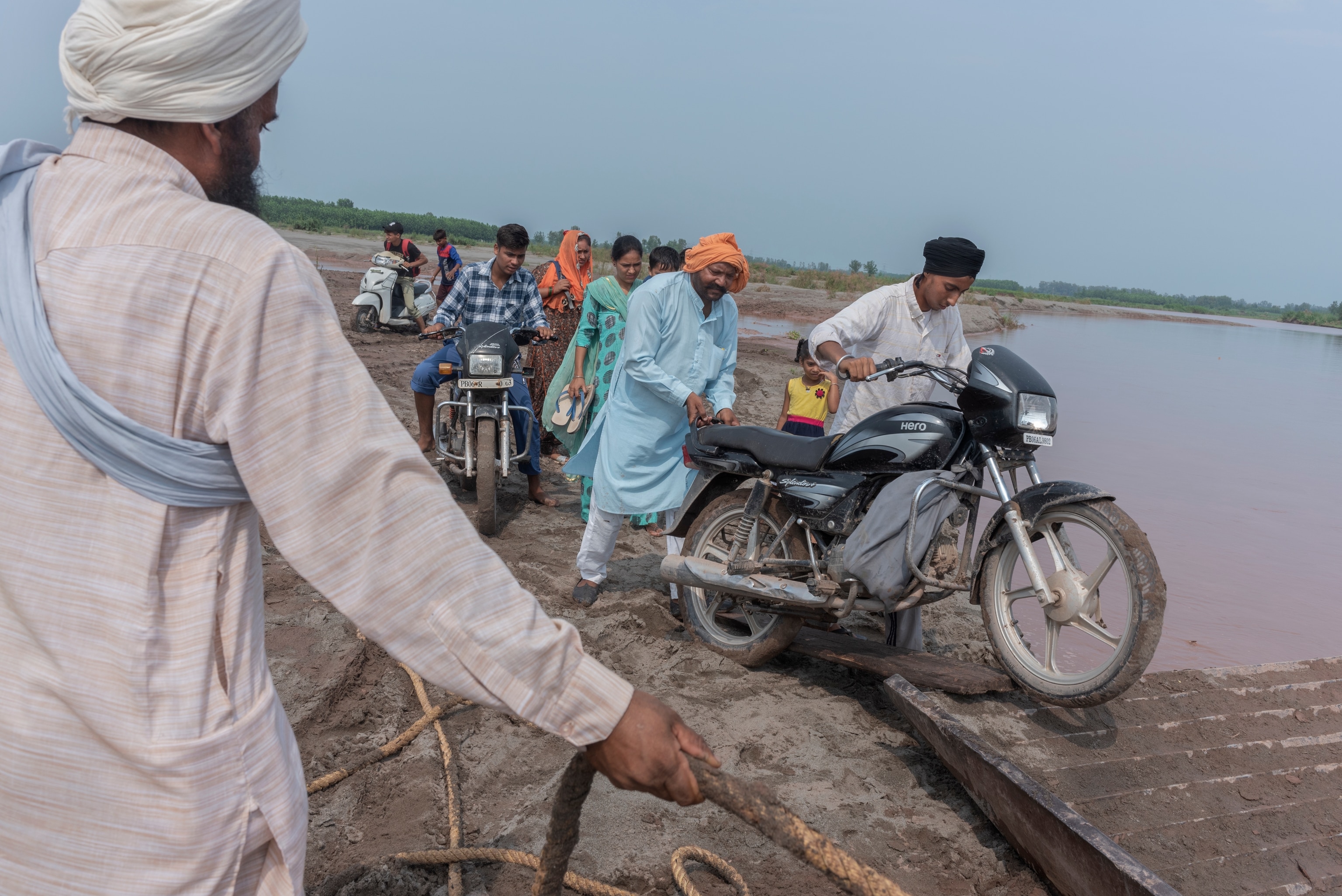
In the last 75 years—since India won its freedom from colonial rule and Pakistan was carved out of its map–the country has grown into one of the world’s major economies. But life has remained unchanged in these hamlets: roads are still unpaved, there are no high schools, barely functioning primary schools, and no hospitals. To approach the villages from the shore, one has to carefully negotiate almost a mile of sandy and slippery river bed, which turns into mush when it rains, giving way to unpaved and uneven stretches leading up to the various villages. The challenges of daily living here has intensified with the increasing frequency of extreme weather events due to climate change, especially flooding.
“A fence separates India and Pakistan—and a river separates us from India,” says Jodh Singh, a 70-year-old farmer from the village of Mammi Chak Ranga. “We are the forgotten people, nothing has changed for us in the last 75 years.”

A river transboundary
The Ravi River, which is about 500 miles long, is one of the five rivers of the Indus system. In India, it runs mostly through the Punjab region and forms a natural international boundary with Pakistan.
On land, the border communities are connected by a floating bridge that is frequently damaged. This is particularly troublesome during agricultural harvest transports aboard tractors, one of the most important activities in a region that relies heavily on farming of wheat and rice—two of India’s essential food grains—along with some vegetables, maize, and sugarcane.
Every year, during the monsoon season that lasts from July through September, the bridge has to be dismantled and replaced with a boat service. But at the peak of monsoon, when the river’s reddish-brown water swells and gushes around in uncontained fury, the boat service, too, stops. The villages then become an isolated island, as they do every evening when boat transportation shuts down.
The fear of getting caught in a crossfire between the two countries is always present. India and Pakistan have fought two full-fledged wars since 1947 as well as several minor skirmishes and a limited conflict in Kargil in 1999. If another war breaks out, the residents fear they would have nowhere to run.
“We could be wiped off the face of the earth during the night and nobody would know before it’s too late,” says Jodh.

Living in limbo
When the international boundary was demarcated, some of the land fell outside India’s fence line. There is no fence on the Pakistan side.
Jodh owns 16 acres of land inside the fencing and another two acres that fall outside of the fence. Every morning, the border guards open the fence gates at 9 a.m. The farmers have identity cards, which they must show before they are allowed to work in their fields on the other side. Border guards stand with them through the entire day of work.
Over the years, many have opted to flee the region, especially the younger generation. Most of the villages are currently inhabited by older residents. “We have sent our children away. They have no life here, no future, but we stayed,” says Jodh’s uncle, Channan Singh. “The land is the only thing we have; it’s our livelihood. How can we abandon it?”
On an unusually sunny morning this season, Jodh’s son, Manjit, 40, boarded the boat to Mammi Chak Ranga with a heavy load of fertilizer and farm equipment. His wife, Rajinder Kaur, 35, carried a big bag stuffed with food since it would be evening before they returned home. “If we stay its hard, if we move its harder,” she says. “But finally we agreed to move for the sake of our children’s future.”

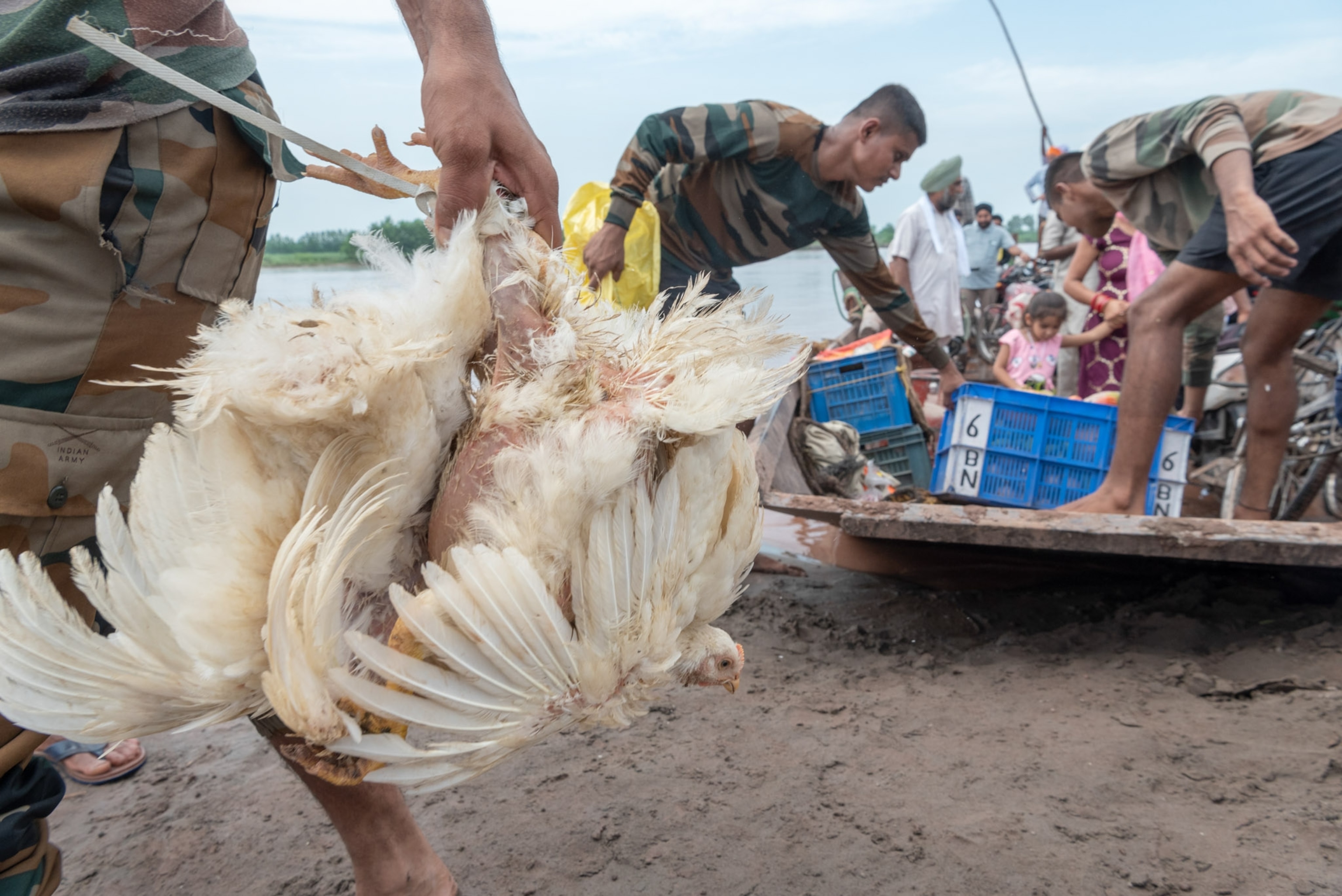
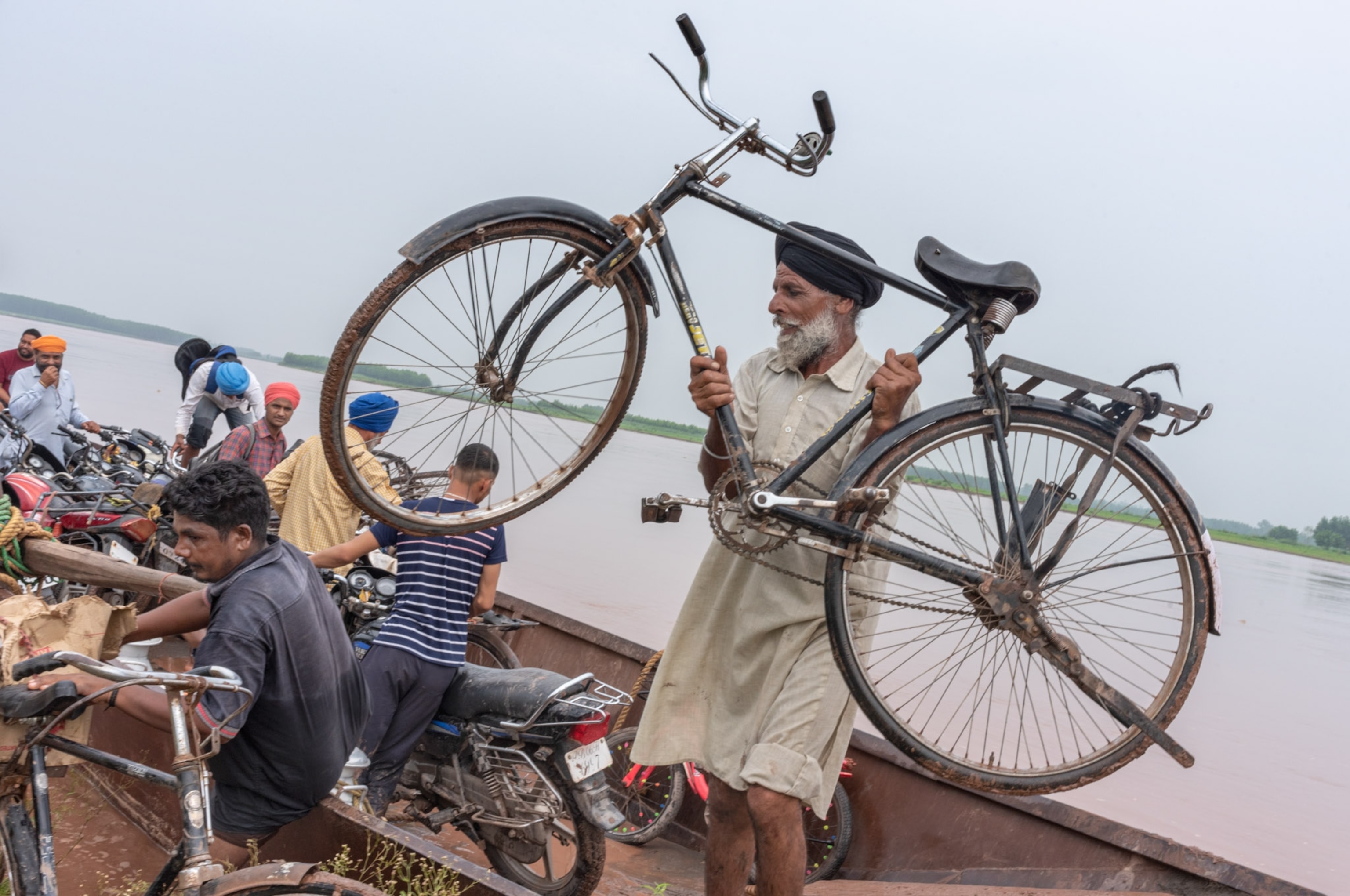
Manjit Singh and all his young neighbors left the area in the late 1980s after a particularly bad flood season when they lost their homes and substantial land. They settled in a village about 10 miles away. Every morning they leave home at 5:30 a.m. on their motorbikes to the boat stop at Makaura Pattan and then heave their bikes onto the boat to get to the other side. Sometimes, when the river is flowing furiously, the wait for the boat can take hours.
On its return trip, the boat that dropped Manjit and his neighbors across the river was packed with at least five motorbikes, milk cans, and students of various ages. Some of the passengers were going to the market or to visit family. One woman was on her way to attend a funeral. “They have been waiting for me since last night,” says Jasvinder Kaur.
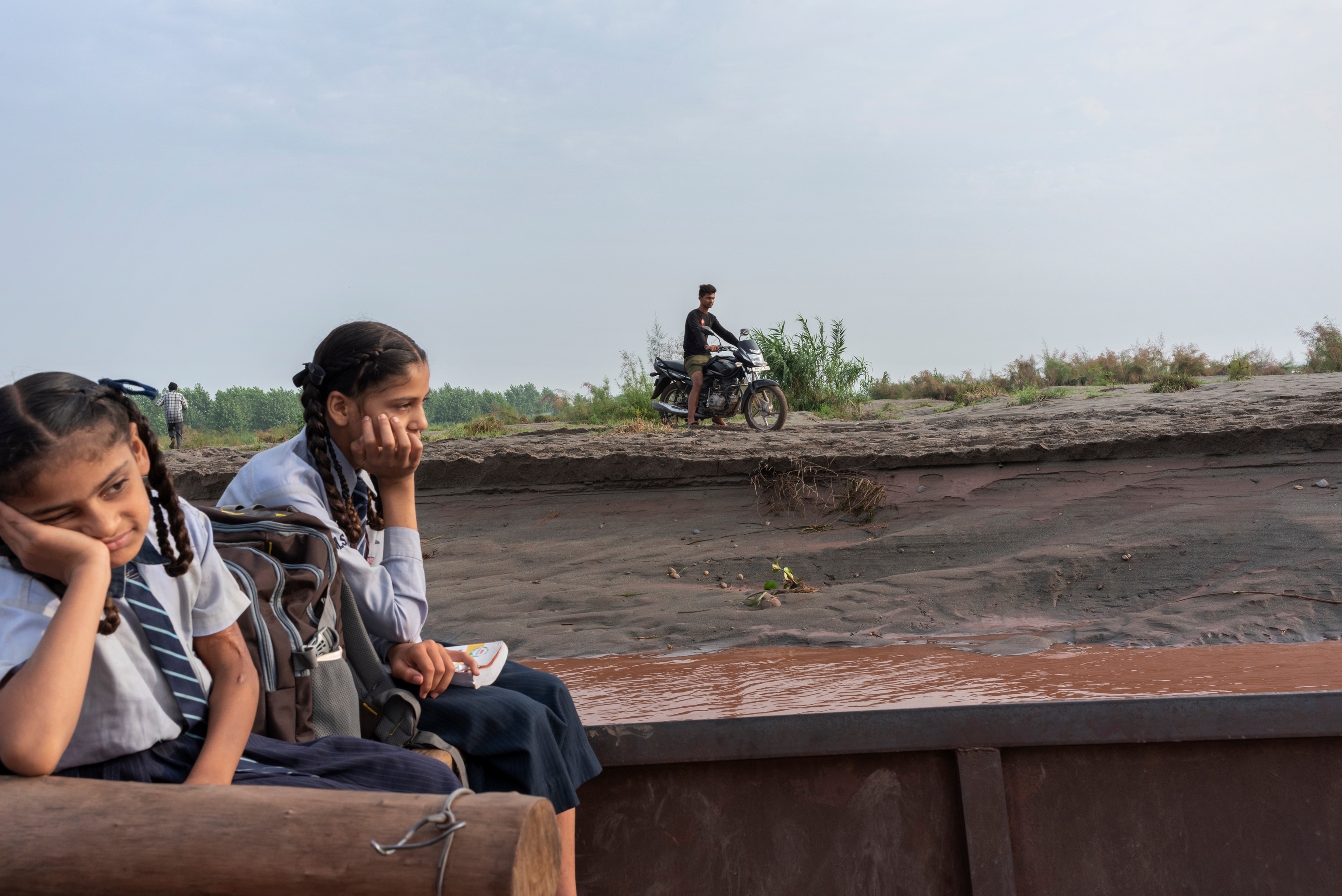
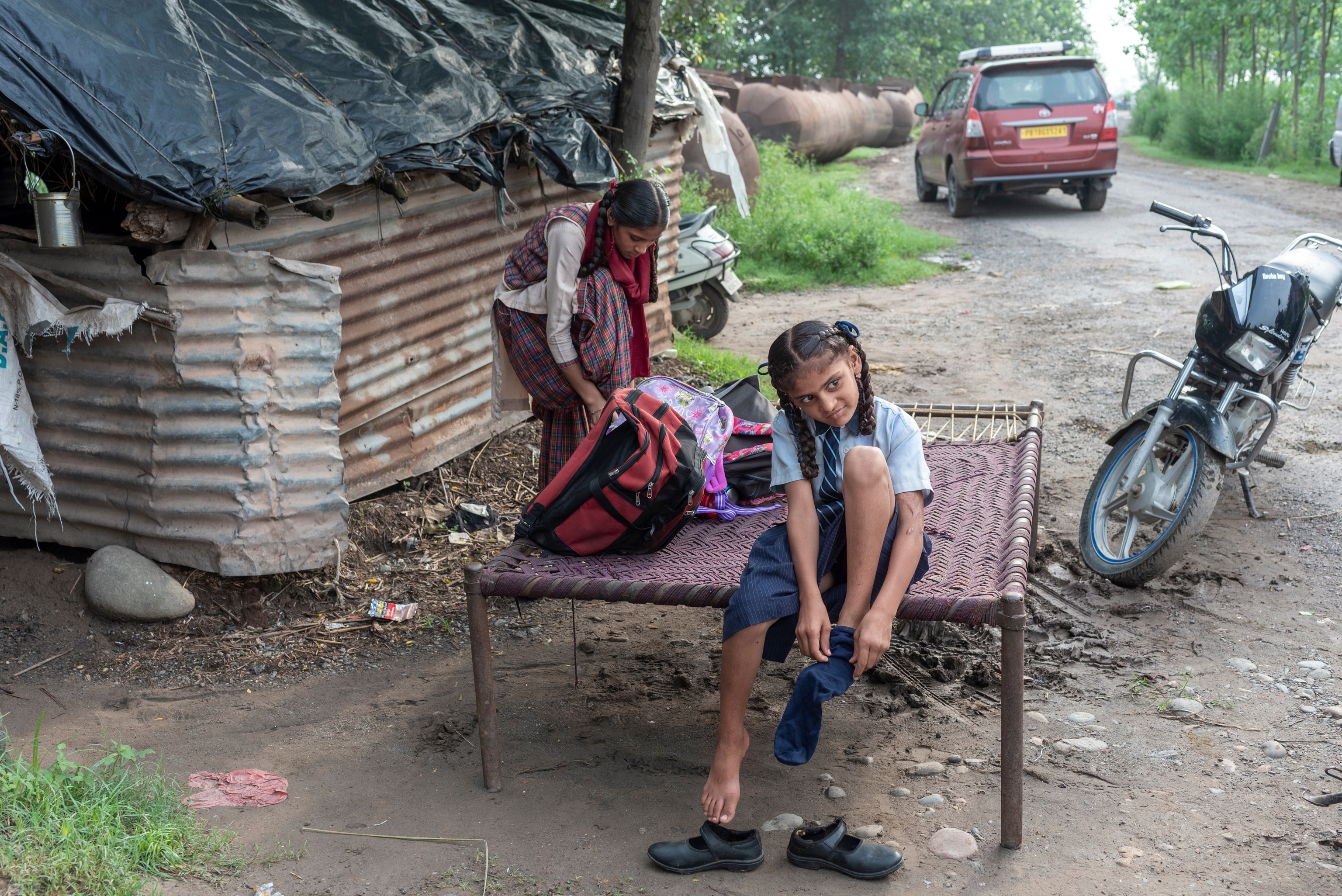
Four cousins ranging in age from nine to 17 sat together on the hull of the boat talking in hushed tones, dressed smartly in their respective school uniforms, their hair neatly tied in braids. They all wore plastic sandals, a stark contrast to the prim uniforms. Once the boat reached land, the girls made their way to a nearby parking space to unlock the scooters that would take them the rest of the distance to their schools. There, they replaced the sandals with socks and shoes, which had been stored in bags to keep them from getting wet while they scrambled onto the boat. Then they took off, their braids flying in the breeze.
“We miss a lot of school days, especially during the monsoons,” says Sanamdeep, 14, who has been living in Kajle since her birth. In the second week of July, for example, the girls could go to school only two days out of the seven.
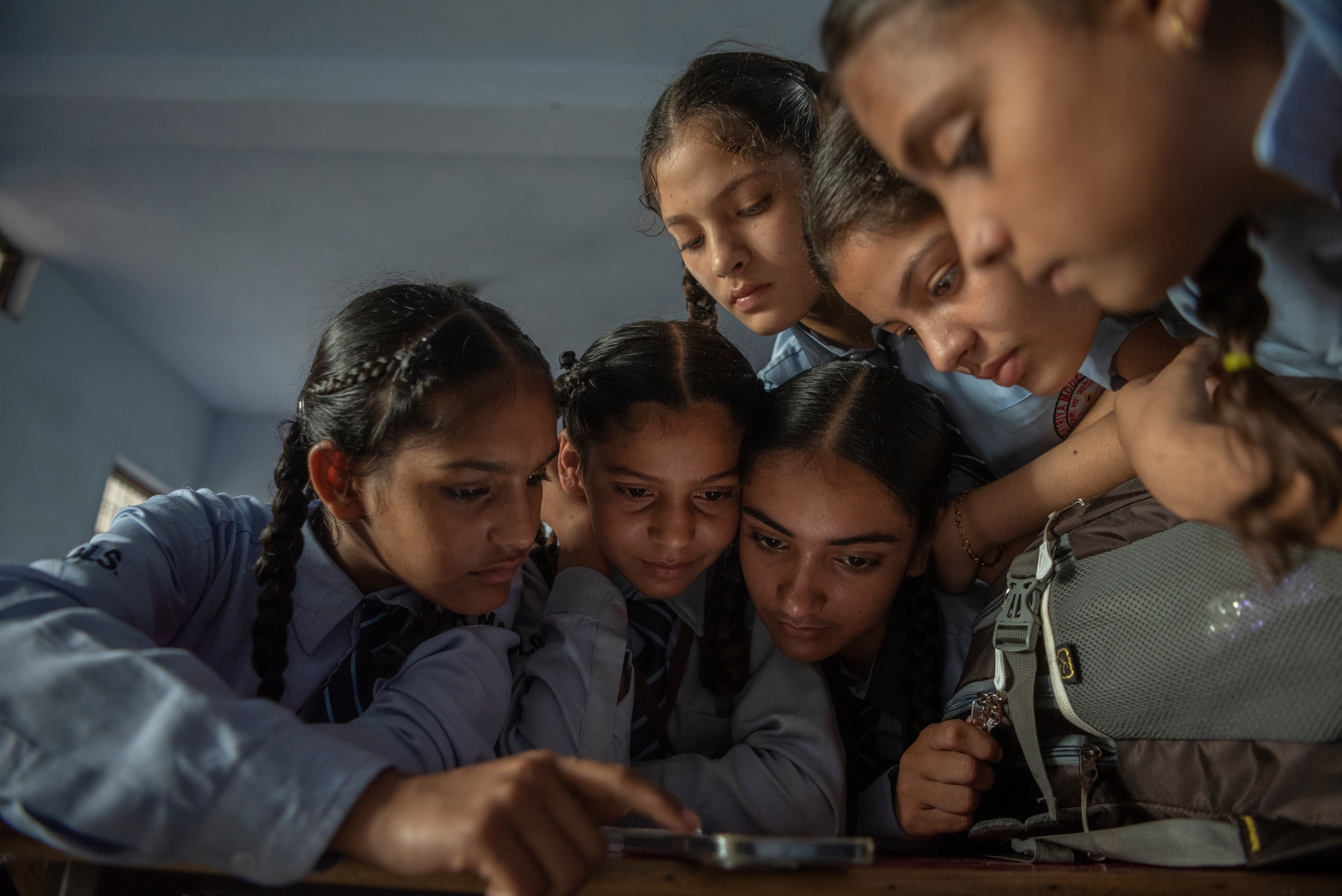

Daily struggles
Life is especially difficult for girls and women here. Sanamdeep and her sister get on the first ferry at 6:30 a.m. and return home on the last ferry at 7 p.m. After school, they take extra classes. Sanamdeep is preparing to get into a boarding school. “All this travel every day—I worry about their safety,” says Baljeet Kaur, their mother. “We have to send them away for their own good.”
One of the gravest problems facing women in this area is the lack of a health care facility, which makes pregnancies and childbirth risky. Sanamdeep’s sister was born in Kajle in the early hours of the morning. “I would have gone to my parent’s house to deliver as women here do, but my labor pain started at 2:30 a.m. and we had no choice but to call a local midwife,” says Baljeet. She was lucky because she had a complication-free birth but some women have died at childbirth in the past because they were unable to reach the mainland on time. “Now women don’t take a chance,” Baljeet says. “They go to the mainland when they are about to deliver.”
A permanent bridge could change their lives drastically. For example, Manjit’s family grows sugarcane. He says after harvest it takes them a whole day to transport the produce to the other side because they have to make several trips over the current floating bridge to ensure the loads aren’t too heavy. That work would take just 30 minutes with a permanent bridge.
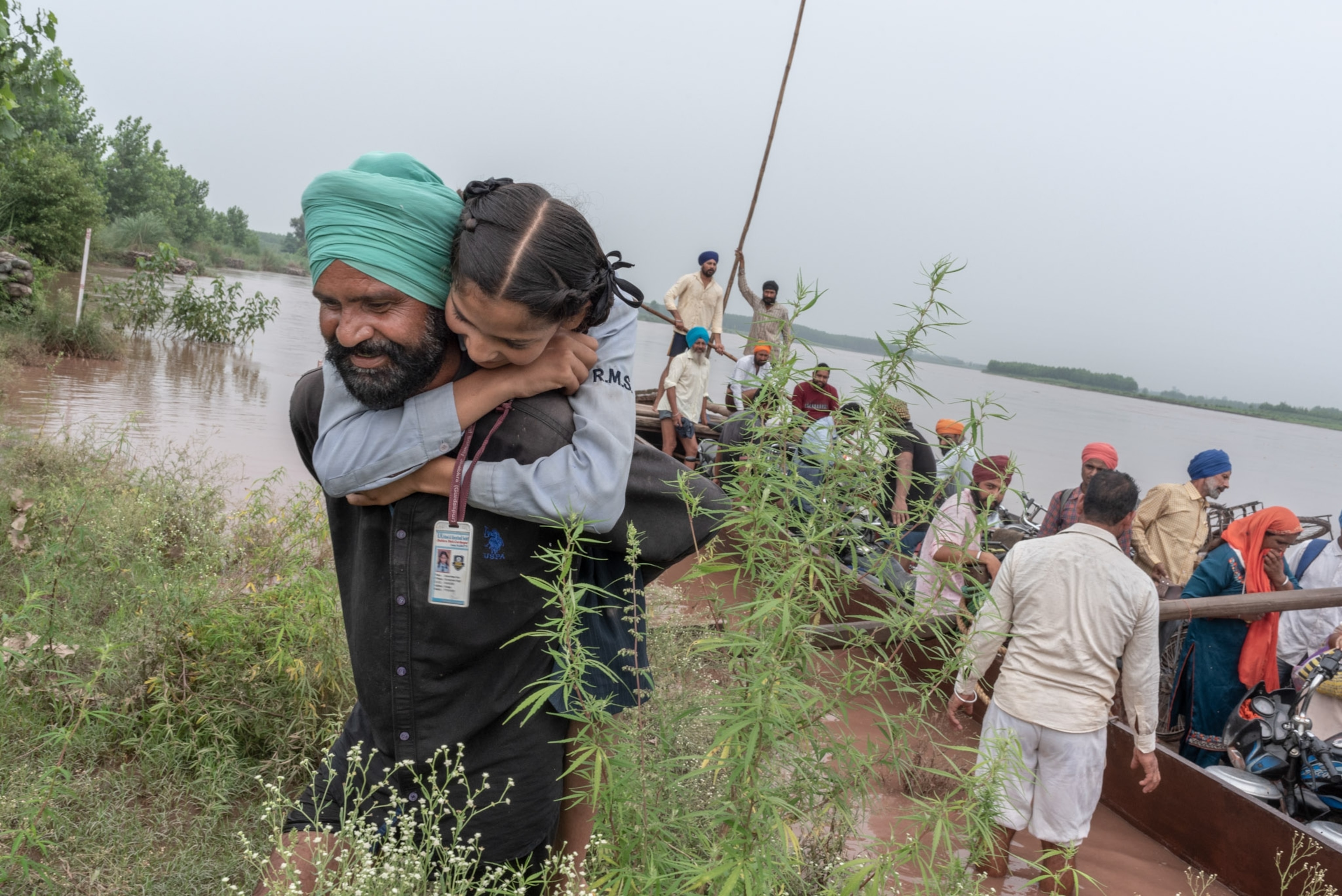
But repeated pleas for one have fallen on the deaf ears of successive governments.
This year, the villagers boycotted state elections, which brought their cause some much-needed attention. Government representatives promised a bridge would be constructed by the end of the year.
Climate change and floods
Gurdaspur is a flood-prone district surrounded by the Ravi and Beas Rivers as well as many small rivulets. Like other parts of India, this region, too, has been feeling the effects of climate change in the form of erratic weather events—scant rainfall followed by increased flooding.
The construction of the Ranjit Sagar Dam in 2001 at the border of Punjab and Jammu had reduced the chances of flash floods in the Ravi River to some extent. But not in the vicinity of Makaura Pattan, where several bodies of water intersect and the flow is at its strongest.
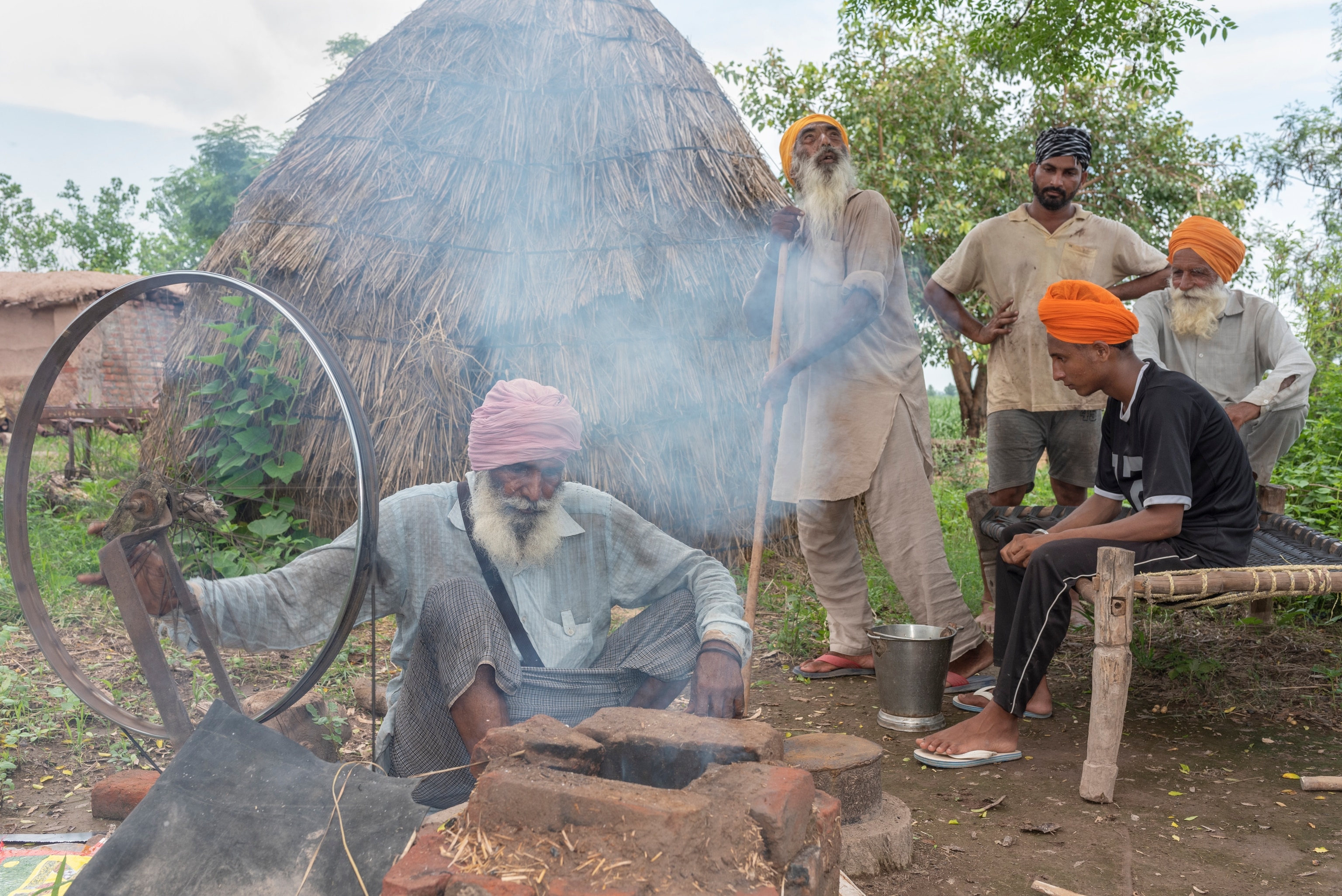
Residents say the floods have washed away about 150 acres of land over the years. The village of Mammi Chak Ranga once spread over a hundred acres. Now there’s only about 20 acres left, says Jodh. His family lost their original home during the 1988 floods–one of Punjab’s worst flood seasons.
Being stranded on a landlocked island without any medical facilities is a sobering reality. Jodh’s wife died of a heart attack last December in the middle of the night. But he called his children only an hour before boat service was scheduled to begin. “They wouldn’t have been able to come before the boat service began,” Jodh says. “So I waited.”
The pathos of forced separation runs through their lives across generations–in tune with the ebb and flow of the river. Simarjit Singh, 17, who lives on the mainland with his parents, commutes daily across the river after school to help his grandparents with their daily tasks. When he prepares to return home in the evening, his grandmother, bent with age and ailments, always walks him to the door. There is no guarantee he will be back the next day–the floating bridge might break down again, or the boat might not ply if the river rises too high.


One boatman’s odyssey
One morning when the river was particularly rough, the boat was caught midstream. After much effort, the boatman, Narinder Singh, managed to get it to shore. But the boat would not be making any more trips that day. Simarjit was stuck on the other side, unable to check on his grandparents. “These days are the worst,” he says. “When we stand on this side of the river and can only hope they are safe.”
Forty-year-old Narinder, who was born in the village of Tur, is continuing a family tradition. His father was one of the first government-appointed boatmen in the region. Narinder, who now lives on the mainland, is a private hire who earns Rs 10,000 per month (around $131). That’s a meager sum, given the risks he takes every day to ferry people across. But overcoming obstacles creates a bond and, in the absence of help from the government, survival here is a community effort.

The boat that had taken off earlier on that turbulent morning was a flat-bottomed, sturdy, steel structure that requires a community effort to push offshore. As the boatman takes the hull, he shouts at the passengers to take the oars on the other end. This combined effort propels the boat forward. Sometimes, when the boat gets stuck in shallow water, it is the villagers who jump in and push the boat toward the direction of the villages on the other side.
Narinder is desperate for a permanent bridge, too, despite the fact that it will mean a loss of his own livelihood. “It’s risky to take the boat out when the river is rising,” he says. Sometimes he is compelled to do so against his better judgement, especially when there’s an emergency. He and his boat are the only link to shore when the floating bridge is dismantled. “If we don’t help, who will?”

